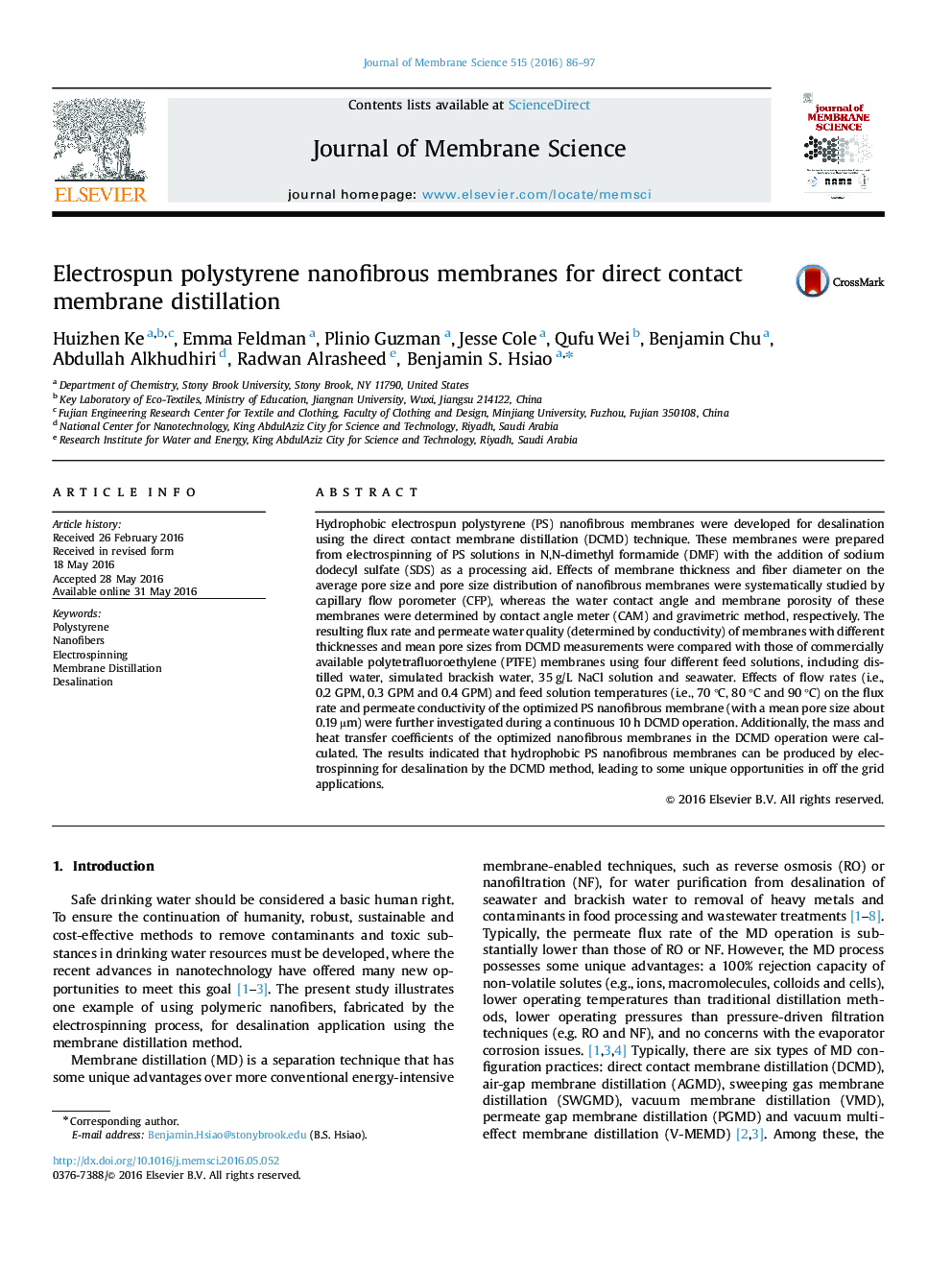| Article ID | Journal | Published Year | Pages | File Type |
|---|---|---|---|---|
| 632378 | Journal of Membrane Science | 2016 | 12 Pages |
•Electrospun polystyrene membranes with mean pore size of 0.19 µm were developed.•The membrane could successfully desalinate seawater with rejection rate >99.99%.•The permeate water flux was about 19–27 kg/m2·h.•The mass transfer coefficient of the membranes was about 4.3×10−7 kg/m2·s·Pa.
Hydrophobic electrospun polystyrene (PS) nanofibrous membranes were developed for desalination using the direct contact membrane distillation (DCMD) technique. These membranes were prepared from electrospinning of PS solutions in N,N-dimethyl formamide (DMF) with the addition of sodium dodecyl sulfate (SDS) as a processing aid. Effects of membrane thickness and fiber diameter on the average pore size and pore size distribution of nanofibrous membranes were systematically studied by capillary flow porometer (CFP), whereas the water contact angle and membrane porosity of these membranes were determined by contact angle meter (CAM) and gravimetric method, respectively. The resulting flux rate and permeate water quality (determined by conductivity) of membranes with different thicknesses and mean pore sizes from DCMD measurements were compared with those of commercially available polytetrafluoroethylene (PTFE) membranes using four different feed solutions, including distilled water, simulated brackish water, 35 g/L NaCl solution and seawater. Effects of flow rates (i.e., 0.2 GPM, 0.3 GPM and 0.4 GPM) and feed solution temperatures (i.e., 70 °C, 80 °C and 90 °C) on the flux rate and permeate conductivity of the optimized PS nanofibrous membrane (with a mean pore size about 0.19 µm) were further investigated during a continuous 10 h DCMD operation. Additionally, the mass and heat transfer coefficients of the optimized nanofibrous membranes in the DCMD operation were calculated. The results indicated that hydrophobic PS nanofibrous membranes can be produced by electrospinning for desalination by the DCMD method, leading to some unique opportunities in off the grid applications.
